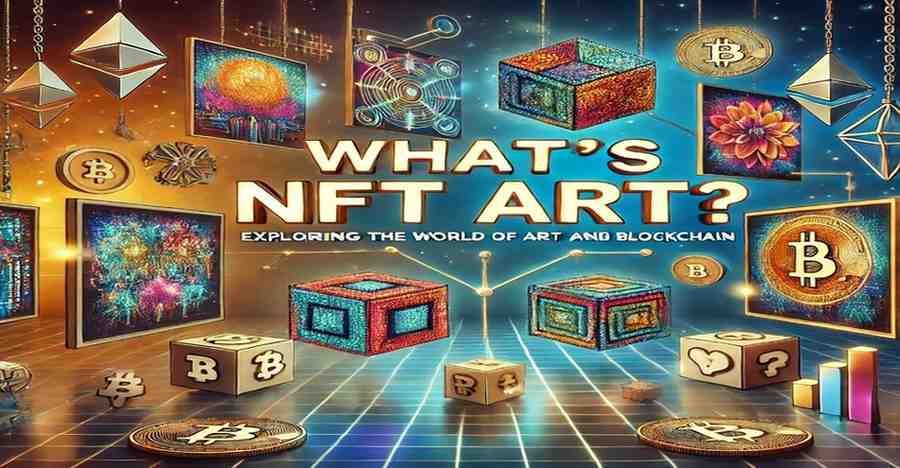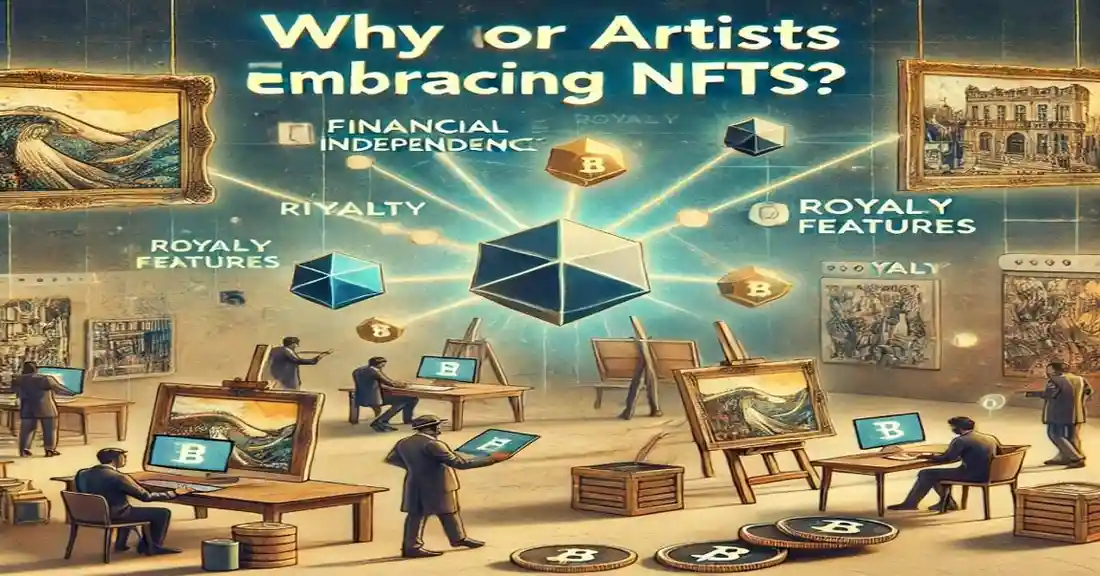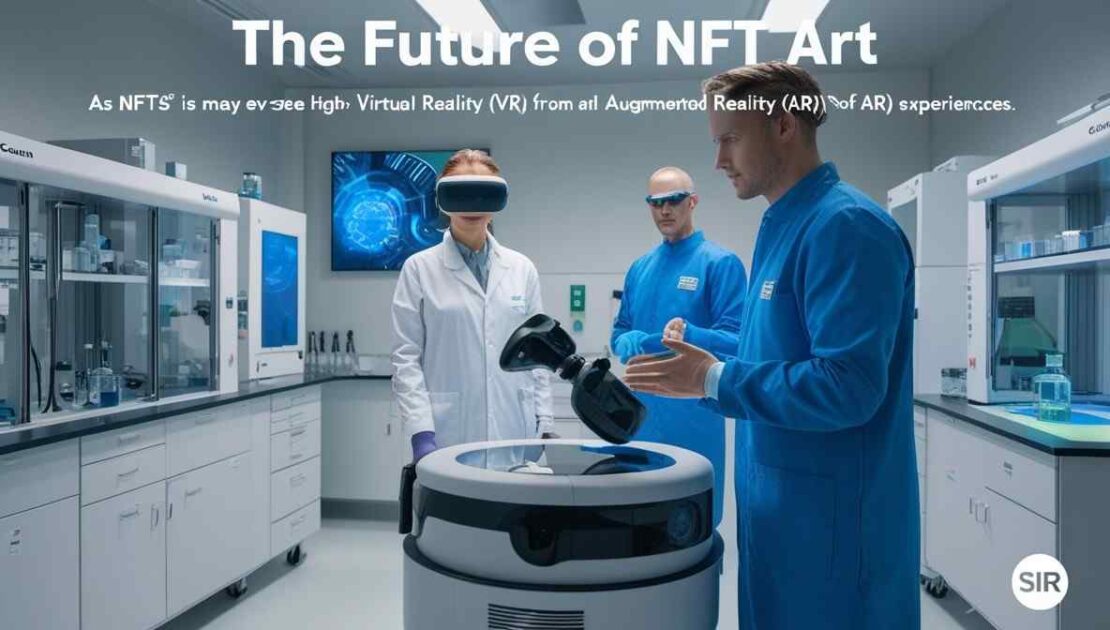What’s NFT Art? Exploring the World of Digital Art and Blockchain
Non-Fungible Tokens (NFTs) have taken the art world by storm, providing digital artists with a way to sell their creations directly to a global audience without relying on traditional galleries or auction houses. But what exactly is NFT art, and how has it reshaped the creative landscape? In this article, we will dive into the concept of NFT art, its benefits, and why it’s a game-changer for the art community.
What is NFT Art?
NFT art is a new form of digital artwork that uses blockchain technology to prove ownership and authenticity. Unlike traditional digital art, which can be easily copied or shared without the artist’s permission, NFTs (Non-Fungible Tokens) allow creators to assign a unique, verifiable token to their work. This means that while anyone can still view or share the art, only one person can officially own the NFT.
NFTs have sparked a revolution in the art world by allowing digital creators to monetize their work in ways that were not possible before. These tokens are “non-fungible,” meaning each one is unique and cannot be exchanged on a one-to-one basis like cryptocurrency. This uniqueness makes NFTs ideal for selling art, music, collectibles, and other digital assets.

If you’re interested in understanding more about how digital assets work, you can also explore Metaverse and Cryptocurrency: Virtual Economies in 2024 for an in-depth look at the virtual economy revolution.
How Do NFTs Work?
At the heart of NFT technology is the blockchain, a decentralized ledger that records all transactions across a network of computers. Each time an NFT is created (or “minted”), it is added to the blockchain, ensuring that its provenance, authenticity, and ownership history are immutable.
Ownership of an NFT is stored on the blockchain, meaning that while the artwork might be copied or shared online, only the person holding the NFT can claim official ownership of the original. This ownership can be transferred, sold, or even gifted, creating a new digital marketplace for art and collectibles. For those interested in seamless blockchain transfers, you might find this article on cross-chain interoperability highly informative.
The Rise of NFT Art
The NFT art movement began gaining traction in 2017, but it really exploded in 2021 when artist Beeple sold his digital collage, “Everydays: The First 5000 Days,” for $69 million at a Christie’s auction. This groundbreaking sale brought NFTs into the mainstream, proving that digital art could be just as valuable—if not more so—than traditional physical works. Learn more about the role of blockchain technology in the broader Web3 movement in Web3 integration.
Other notable NFT collections, like CryptoPunks and Bored Ape Yacht Club, have also gained attention, with individual pieces selling for millions of dollars. These moments have established NFTs as a significant force in both the digital and traditional art worlds.
Why Are Artists Embracing NFTs?
One of the key reasons artists are flocking to NFTs is the potential for direct sales and royalties. Unlike in the traditional art market, where artists often have to rely on galleries or auction houses to sell their work, NFTs allow creators to sell directly to buyers. This direct-to-consumer model eliminates intermediaries and gives artists more control over their work and pricing. The rise of Layer-2 meme coins highlights how blockchain technology is opening new avenues for digital artists and creators.

Additionally, NFT platforms often include royalty features, allowing artists to earn a percentage of future sales if their work is resold. This creates an ongoing stream of income for creators, something that is nearly impossible to achieve in the traditional art world.
How to Create NFT Art
Creating NFT art is relatively simple, thanks to the many platforms available. To get started, you’ll need to:

- Choose a platform for minting your NFT, such as OpenSea, Rarible, or Foundation.
- Create or upload your digital artwork.
- Mint your NFT, which involves adding your artwork to the blockchain.
- Set a price for your NFT and list it for sale on the platform. You can also explore strategies for leveraging blockchain and crypto investments by checking out Crypto Arbitrage Trading.
Popular Platforms for Selling NFT Art
Several NFT marketplaces have emerged as leaders in the space, each catering to different types of creators and collectors. Some of the most popular platforms include:

- OpenSea: The largest NFT marketplace, offering everything from art to music to virtual real estate.
- Rarible: A decentralized platform where users can create and sell NFTs without coding skills.
- Foundation: An invite-only marketplace known for showcasing high-quality digital art from well-known creators.
Learn more about the future trends of blockchain by exploring The Crypto Council for Innovation.
Why NFT Art is Unique
The concept of digital scarcity is what sets NFT art apart from other forms of digital media. While anyone can download or share a digital image, an NFT provides proof that you own the original. This concept is similar to owning a famous painting: while reproductions exist, only one person owns the original. Want to dive deeper into how blockchain is changing scalability? Check out Blockchain Scalability Solutions for more details. By using NFTs, artists can ensure that their work retains its value and exclusivity in the digital world.
Famous NFT Artists and Their Works
Some of the biggest names in the NFT art world include:
- Beeple: The artist behind “Everydays: The First 5000 Days,” which sold for a record-breaking $69 million.
- CryptoPunks: A collection of 10,000 unique pixel art characters, many of which have sold for millions.
- Bored Ape Yacht Club: A popular collection of cartoon apes that has garnered a massive fanbase and celebrity following.
For those interested in how blockchain technology is changing the future, check out Ethereum Investment Strategies.
Challenges and Criticisms of NFT Art
While NFT art has opened new opportunities for artists, it is not without its challenges. One of the biggest criticisms is the environmental impact of NFTs. Minting and trading NFTs require significant energy consumption, as they rely on blockchain networks like Ethereum.
Additionally, the market volatility of NFTs means that prices can fluctuate wildly, making it a risky investment for collectors and artists alike. If you’re interested in understanding how to navigate market risks, read more about Crypto Arbitrage Trading.
The Future of NFT Art
The future of NFT art looks bright, with many experts predicting continued growth. As technology evolves, we may see NFTs integrated into virtual reality (VR) and augmented reality (AR) experiences, offering even more immersive ways to interact with digital art.

How to Invest in NFT Art
If you’re thinking about investing in NFT art, it’s essential to do your research. The NFT market can be unpredictable, with prices skyrocketing one day and plummeting the next. Start small, invest in pieces you love, and be prepared for the ups and downs of the market.
Conclusion
NFT art is more than just a trend—it’s a fundamental shift in how we think about ownership, art, and digital content. With its ability to offer artists more control and financial benefits while giving collectors a way to own unique digital assets, NFTs are changing the art world in exciting ways.
FAQs
What is an NFT?
An NFT is a non-fungible token that represents ownership of a unique digital item, such as art, music, or collectibles, stored on the blockchain.
How do I buy NFT art?
You can buy NFT art on marketplaces like OpenSea, Rarible, and Foundation by creating an account and connecting a digital wallet like MetaMask.
Why is NFT art so expensive?
The value of NFT art comes from its uniqueness, scarcity, and the demand from buyers. Some NFTs are considered highly valuable because they are rare or from well-known artists.
Can I sell my own NFT art?
Yes! Many platforms allow you to create, mint, and sell your own NFT art. You’ll need to choose a marketplace, create your art, and pay a small fee to mint your NFT on the blockchain.
Is NFT art environmentally friendly?
NFTs have been criticized for their environmental impact due to the energy consumption of blockchain networks. However, new technologies, like Ethereum 2.0, aim to reduce this impact.